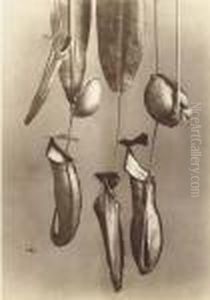Alphonse Bernoud Paintings
Alphonse Bernoud was a pioneering French photographer, recognized for his significant contributions to the development of photography in the 19th century. Born in 1820 in Lyon, France, Bernoud initially began his career in the arts as a painter. However, his interest in the burgeoning field of photography soon took precedence, and by the 1840s, he had immersed himself in the photographic world.
Bernoud's early work in photography involved experimenting with daguerreotypes, the first commercially successful photographic process. He moved to Naples, Italy, where he opened a photography studio in 1846, becoming one of the first professional photographers in the country. His studio quickly gained a reputation for high-quality portraits and for capturing the scenic beauty of the Italian landscape. Bernoud was particularly adept at utilizing the daguerreotype process to produce clear and detailed images, which was challenging given the technical limitations of the time.
Throughout the 1850s and 1860s, Bernoud continued to innovate and improve his photographic techniques. He was among the first to adopt the ambrotype and albumen silver print processes, which allowed for easier reproduction and distribution of photographs. Bernoud's portraits of the Italian nobility and his photographs of ancient ruins, landscapes, and everyday Italian life contributed significantly to the medium's popularity. His work was widely collected and served as a visual record of Italy during a period of significant change and modernization.
Bernoud's influence extended beyond his photography studio. He was also an educator and mentor to many aspiring photographers, helping to establish photography as a respected art form. Despite the vast technological advances that occurred within the field of photography during his lifetime, Bernoud remained a prominent figure, adapting to new processes and continuing to produce work of high artistic quality.
Alphonse Bernoud died in 1889, leaving behind a legacy as one of the early innovators in the world of photography. His contributions to the field, particularly in portrait photography and his documentation of Italian heritage, have made him a notable figure in the history of art and photography.
